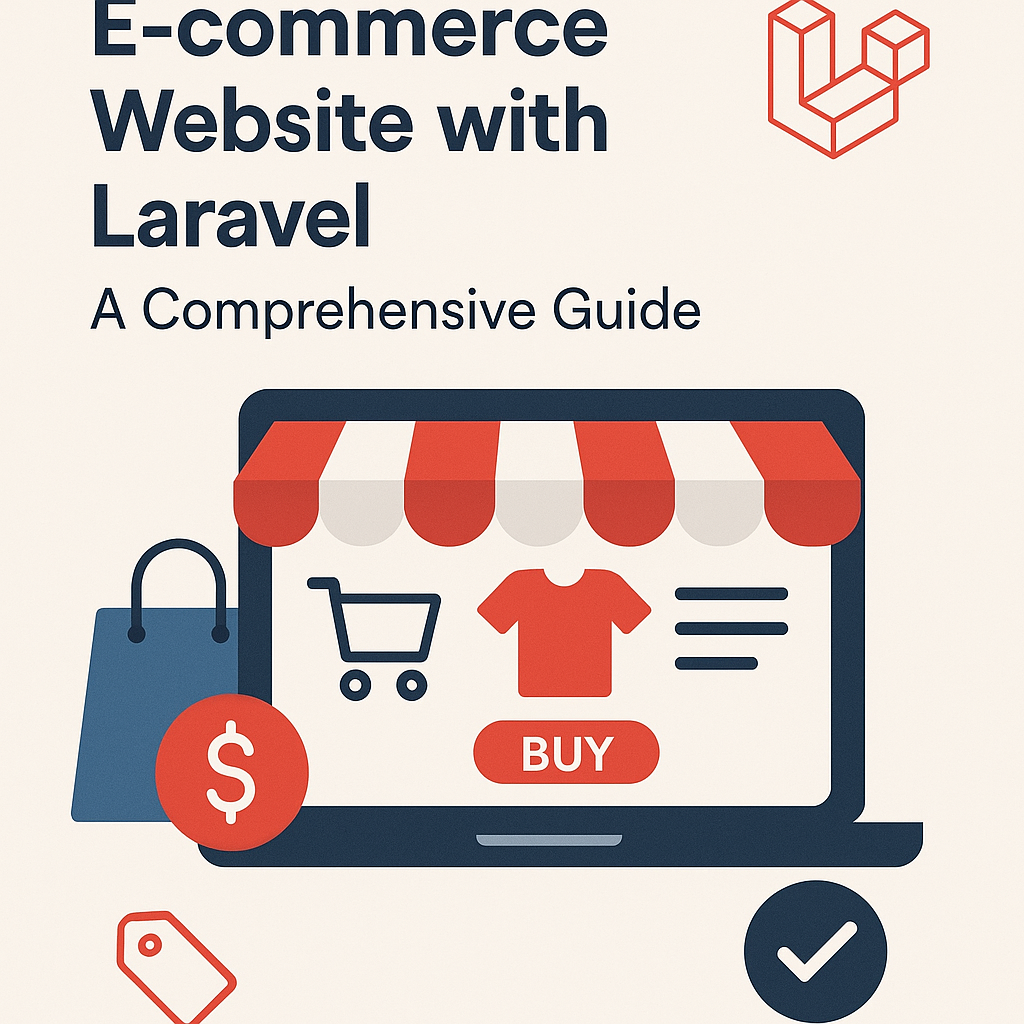E-commerce Website with Laravel: A Comprehensive Guide

E-commerce Website with Laravel: A Comprehensive Guide
In today's digital age, having a strong online presence is crucial for businesses of all sizes. While ready-made CMS solutions like Shopify, WooCommerce, and Magento offer quick setups, they often lack the flexibility and customization needed for unique branding and complex business logic. Laravel, a robust PHP framework, provides the perfect balance of power and flexibility to overcome these limitations. This guide explores building e-commerce websites using Laravel, focusing on headless architectures, popular packages, and best practices.
Why Choose Laravel for E-commerce?
Laravel combines the flexibility of custom development with the benefits of a mature ecosystem, making it an ideal solution for unique e-commerce needs:
-
Open-Source Advantage:
Complete control over your codebase, allowing unmatched customization and innovation. -
Scalability:
Handles increased traffic, expanding product catalogs, and growing business demands smoothly. -
Security:
Built-in protection against threats like CSRF, SQL injection, and XSS attacks, safeguarding sensitive customer data. -
MVC Architecture:
Organized, maintainable code structure speeds development and eases collaboration. -
Extensive Ecosystem:
Wide range of packages accelerates development and reduces costs. -
Headless Commerce:
Decouples front-end and back-end, enhancing flexibility, security, and performance. -
API-First Approach:
Simplifies creating APIs for easy integration with various storefronts, mobile apps, and external services.
Headless E-commerce with Laravel
A headless e-commerce architecture separates the front-end (customer-facing) from the back-end (business logic and data handling), providing significant benefits:
-
Flexibility:
Choose modern front-end technologies like Vue.js, React, or Angular for highly customized user experiences. -
Performance:
Faster page load times and improved responsiveness, leading to enhanced customer satisfaction. -
Omnichannel Presence:
Deliver consistent shopping experiences across web, mobile apps, and IoT devices effortlessly. -
Enhanced Security:
Reduces the attack surface by isolating backend logic from front-end vulnerabilities.
Laravel-based packages such as LunarPHP specifically facilitate headless e-commerce by providing a robust RESTful JSON:API and an intuitive admin panel built with Livewire.
Popular Laravel E-commerce Packages
Selecting the right Laravel package can significantly speed up your development and ensure crucial functionalities are covered. Here’s a quick overview:
-
Bagisto:
An open-source platform supporting marketplaces, multi-store setups, PWAs, and B2B commerce. -
Lunar:
Ideal for headless solutions with clean architecture, JSON:API, and robust management capabilities. -
Aimeos:
High-performance, API-first solution suitable for large-scale e-commerce, marketplaces, and B2B scenarios. -
Vanilo:
A streamlined framework emphasizing Laravel's simplicity, suitable for quick and efficient e-commerce projects. -
AvoRed:
Modular, customizable Laravel shopping cart, ideal for developers seeking tailored functionality. -
Laravel Shopping Cart:
A straightforward package for quick shopping cart implementations. -
Cashier:
Integrates subscription billing with Stripe or Paddle effortlessly. -
Laravel PayPal:
Provides seamless PayPal payment integration.
Laravel vs. Ready-made CMS: Comparison
| Feature | Laravel E-commerce Packages | Ready-made CMS (Shopify, WooCommerce, Magento) |
|---|---|---|
| Customization | High; complete code control | Limited by themes/plugins |
| Scalability | Highly scalable | Varies based on CMS |
| Security | Requires careful implementation | Managed by CMS, requires frequent updates |
| Development Time | Longer; requires coding expertise | Shorter; quick setup and out-of-the-box functionality |
| Cost | Potentially lower long-term | Subscription/transaction fees can accumulate quickly |
| Technical Skill | Requires skilled Laravel developers | Easier to manage with less technical knowledge |
Installation and Setup
Laravel e-commerce packages typically install via Composer, the PHP package manager:
Bagisto Example
bashCopyEdit
composer create-project bagisto/bagisto
Set your database and email configuration in the .env file, following package-specific instructions.
LunarPHP Example
bashCopyEdit
composer require lunarphp/lunar
Similar setup patterns apply, usually including database migrations and initial configuration through .env.
Building Your Laravel E-commerce Store: Step-by-Step
-
Set Up Development Environment:
-
Use Laravel Sail for simplified dependency management and environment consistency.
-
-
Database Design:
-
Create database tables for products, categories, orders, users, and payments.
-
-
Define Eloquent Models:
-
Clearly map interactions between database tables and business logic.
-
-
Develop RESTful APIs:
-
APIs for product catalogs, shopping carts, order processing, and checkout operations.
-
-
Front-end Development:
-
Use Vue.js, React, or Angular, consuming the APIs created to build dynamic user interfaces.
-
-
Payment Integration:
-
Seamlessly integrate payment solutions using Laravel Cashier (Stripe), Laravel PayPal, or external options like Snipcart.
-
-
Admin Panel Development:
-
Use Laravel Livewire for dynamic, user-friendly administration of products, orders, and customer management.
-
-
Testing and Deployment:
-
Thoroughly test features, security, and performance, then deploy your application on reliable hosting services such as Cloudways.
-
Real-world Laravel E-commerce Examples
Successful Laravel implementations highlight its power and versatility:
-
Bagisto: Powers online stores for notable brands such as Toyota Thailand, LG Egypt, and Viveks.
-
Vanilo: Successfully implemented by online bookstore Les libraires, demonstrating Laravel's scalability and flexibility.
Customer Success Stories
Businesses leveraging Laravel for their e-commerce platforms often report major improvements, including:
-
Increased scalability handling substantial traffic surges.
-
Enhanced security providing peace of mind.
-
Greater control and flexibility in managing complex business logic and branding.
These experiences underline Laravel’s transformative impact in the e-commerce industry.
Final Thoughts
Building an e-commerce site with Laravel delivers unmatched flexibility and power compared to traditional CMS solutions. By carefully selecting Laravel packages, adhering to best practices, and considering headless architecture options, you can create scalable, secure, and uniquely tailored e-commerce platforms. Whether you prefer a traditional monolithic approach or a modern headless architecture, Laravel equips you with all the necessary tools to bring your vision to life.

